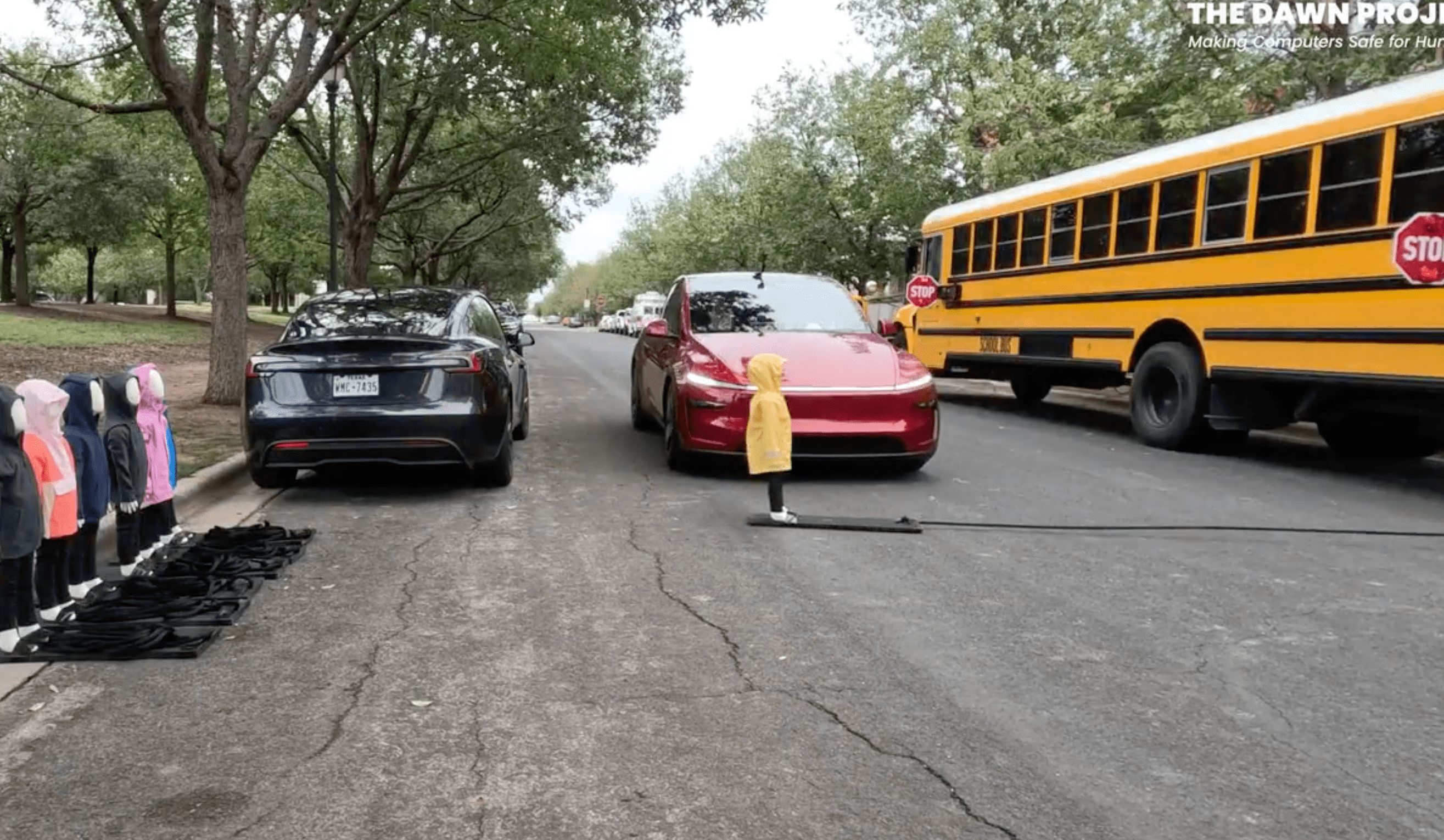Tesla is preparing to unleash a caravan of driverless robotaxis in Austin, Texas this month — but technology safety advocates who have tested the vehicles have found alarming blind spots that lead the cars to run over children crossing the road to a school bus.
CEO Elon Musk announced on Twitter earlier this month that he would launch the self-driving service on June 22 — a deadline the company ultimately met — and that the first robotaxi would steer itself from Tesla’s factory to a customer’s house on June 28. The dates were not firm because Musk was “being super paranoid about safety,” he explained.
Some Texans believe he isn’t being paranoid enough.
“Tesla has obviously been taking shortcuts in developing this technology,” said Chris Womack, an organizer with ResistAustin which has led non-violent demonstrations against the Trump administration. “Musk is releasing a new hazard onto Austin streets, and should halt it immediately."
In order to prove the robotaxis don’t belong on Austin roads, volunteers with ResistAustin teamed up with Tesla Takedown — a group which led grassroots protests outside Tesla dealerships this spring — to demonstrate the dangers of supposedly “self-driving” technology.
On a quiet street near Austin’s Mueller Lake Park on June 12, the group set up an experiment by placing a Tesla Model Y in one lane of the street, and a school bus a few hundred yards away in the other. Once the car began accelerating to 25 miles per hour, the bus driver turned on their vehicle’s flashing red lights and extended stop-arm, and another volunteer put a child-sized mannequin into the Tesla’s path.
Instead of stopping before the school bus as intended, the Tesla failed to recognize its flashing lights and sign and barreled down the road, smashing into the child-sized dummy. In case it was a fluke, volunteers ran the test the same way seven more times. But the Tesla crashed into the inflatable child each time.
Dan O’Dowd — a safety advocate with the software watchdog group Dawn Project, and the architect of the experiment — wasn’t surprised by the outcome, since he had done dozens of similar assessments of Tesla’s self-driving software in other states and published videos of his findings online.
“We tried it many times. It’s not a rare case,” he said. “Elon Musk is saying we have self-driving cars, but we know the software doesn’t work.”
Womack of ResistAustin was familiar with those tests, but didn’t believe the Tesla would completely ignore the school bus or the mannequin until he saw it first-hand.
“The Tesla car just roared right past all the warning signs and hit the dummy,” he said. “Then once it hit the dummy, it kind of stopped then kept on going — usually with a crunch.”
Texas transportation officials say they’re closely supervising Tesla’s robotaxi rollout, which Musk told CNBC would consist of 10 to 20 vehicles. The city of Austin’s Autonomous Vehicle Working Group has provided Tesla with maps of schools and school zones, as well as information about traffic procedures for law enforcement and special events.
But a Texas Department of Motor Vehicles spokesperson said the agency does not have any direct authority over the operation of autonomous vehicles, signalling that no governmental agency is actively managing Tesla’s pilot. That same spokesperson referred questions about the pilot’s operation to Tesla.
Instead, the state has largely adopted a hands-off policy for hands-free vehicles. The Texas state legislature even barred its cities from regulating AVs in 2017, paving the way for companies to test self-driving cars on public roads.
That could soon change. This year, state lawmakers revised the law to allow the state DMV to permit and register commercial fleets of autonomous vehicles, including robotaxis. The bill, which is awaiting action from the governor, would only allow vehicles that met certain benchmarks indicating a high safety standard of driving automation to accept paid rides in the state — and Tesla’s self-driving vehicles don’t currently meet that threshold. The same law would require fleet operators to share their safety records with the public and ensure a vehicle can safely disable itself if it encounters a dangerous road condition.
On Wednesday, several state lawmakers sent Tesla a letter demanding the company delay its robotaxi rollout until September while they establish a new framework with more DMV oversight.
In the meantime, O’Dowd warns that Tesla’s software is already failing public tests — ane he doesn’t know why. He noted that Waymo, a robotaxi competitor, has not had these types of glitches with school buses and other objects.
“Other people have been able to do it,” he said. “It costs a lot of money. In China there’s four companies at least that do self-driving cars and they all work. The only people that seem to be able to do self-driving and not make it work is Tesla. [And] they claim to be the leaders.”






